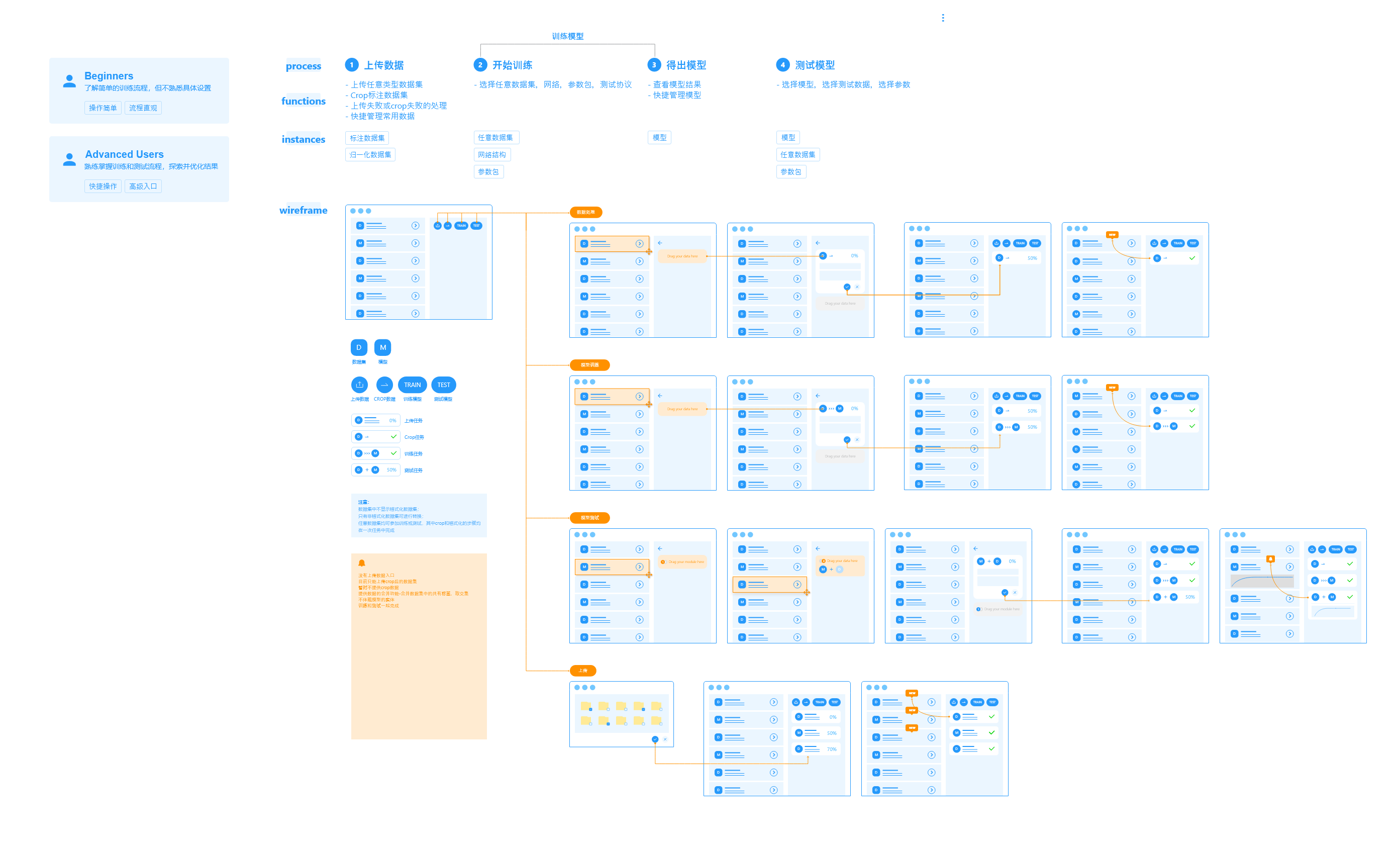Streamline AI Development Process with Graphical UI Components
Empower AI pipeline with UX
When I worked as a freelance designer, I cooperated with Seetatech, an AI start-up in China, to build a deep learning platform for business use ranging from industrial face recognition, self-service retail, and intelligent animal farming. The application now has being used by Ping’ An Insurance company and Kingsoft Deep Learning. Design details are not expanded here due to confidential agreements and related regulations.
Applications
Design AI for business use vs. end-users
It is interesting to find that there are different usage scenarios of AI when it comes to business users versus personal users. For business users, the most important thing of AI development is to “get job done” - deploy AI applications in scale. For example, when it comes to predict the health condition of cows’ growth based on their morphological features, practitioners focus on completing the predictions from their mass data base in an effective way. Based on our research, the user flow of business practitioner simply as the following steps: upload the data, label the data, select the model, and used the model to train the dataset. Therefore, to ease the training process, we create functions and web interactions that are simple enough for batch operations. Additionally, we also create seamless service that connect the operation from data labeling to training. As most of business practitioners are not technically AI developers, we integrate the development process into a graphic interface to make the process easy to understand.
Different from business users, most of personal users are AI developers. And their major efforts are spent on fine-tuning models or testing models in different use context. Although most python IDE and notebook applications have provided rich coding environment for developers, it is still difficult for them to reproduce models from scratch. Thus, we design functions and templates that standardize the training process and parameters tuning for developers to quickly adopt new models from open-sourced platforms, like HuggingFace. Additionally, we also integrated different evaluation metrics within the graphic interface dashboard to test the model performance.
Finally, we designed two platforms for the business and end-users: SeeTaaS and AutoDL. SeeTaaS is an industrial-level platform which integrated data management, built-in algorithms with hyper-parameter fine-tuning, and computation power as an enterprise AI platform. AutoDL is a personalized model training platform that provides popular deep learning dataset and algorithms for AI developers to customize AI applications. Accompanied with these two deep learning platforms, we also designed a data labeling website and a data Kanban.



Integrate AI components with design patterns
Design patterns help streamline AI development process and make it friendly to use when it comes to people who are not familiar with AI. In consumer markets, AI is more like a tool rather than research subject. Therefore, when AI development is translated into graphic components that allow users to drag and move, it lowers the barrier for non-AI expert to quickly adopt and deploy model into practice.